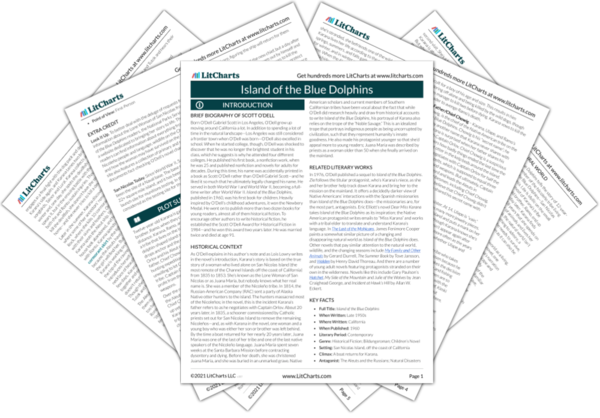Ramo is ’s six-year-old brother and Chief Chowig’s son. He’s small for his age, but very intelligent and observant. He’s often getting into trouble and making mischief, which is very annoying for Karana (Karana and Ramo’s mother is dead, so Karana and her older sister, , care for Ramo). Having never seen a ship before, Ramo is entranced when the Aleuts arrive to hunt otter around the island. He’s excited and afraid when, about a year later, another ship arrives to take him and the rest of his tribe “across the sea.” But disaster strikes when Ramo insists on going back to the village for his forgotten fishing spear, and he ends up getting left on the island. Karana leaps off the ship and returns to the island to care for him, but this only lasts a day. Ramo instantly renames himself Chief Tanyositlopai and decides to take on tasks that are far too difficult for a boy of his age and size. This results in him wandering off alone and being killed by the wild dogs, though he does manage to kill two before dying. Karana vows to kill the dogs’ to avenge Ramo’s death.
